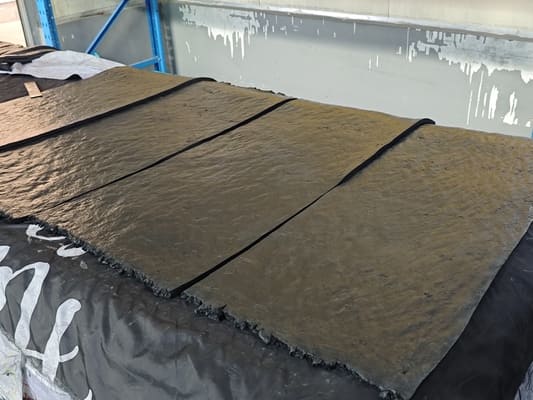Rubber compounds are carefully formulated mixtures of various materials designed to enhance the physical properties of rubber. These materials are combined in specific proportions to achieve desired characteristics such as elasticity, durability, and resistance to environmental factors like temperature, chemicals, and abrasion. Compounding rubber is a crucial part of the manufacturing process, as it dictates how the final rubber product performs in its intended application.
What is the Elemental Compound of Rubber?
The elemental compound of rubber primarily consists of polymer chains1 made from a variety of monomers. Natural rubber, for example, is predominantly made from polyisoprene, while synthetic rubbers can be derived from various monomers such as styrene-butadiene or ethylene-propylene-diene. These polymer chains give rubber its characteristic flexibility and resilience.
However, rubber is rarely used in its pure form. Instead, it is compounded with other ingredients to modify its properties. These ingredients typically include:
- Vulcanizing agents (like sulfur)
- Plasticizers to improve workability
- Fillers to increase strength
- Antioxidants and antiozonants to protect against aging
- Coloring agents for aesthetic purposes
Together, these ingredients create a rubber compound that can be tailored for specific uses, from car tires to industrial seals.
What are the Cure Characteristics of Rubber Compounds?
The cure characteristics of rubber compounds refer to how the rubber behaves when it undergoes the curing or vulcanization2 process. Curing is the chemical process that transforms raw rubber into a usable material by crosslinking polymer chains, making the rubber more durable, heat-resistant, and elastic.
The key cure characteristics include:
- Cure Time: The amount of time the rubber needs to be exposed to heat and pressure for full curing.
- Cure Temperature: The temperature at which the rubber compound needs to be cured to achieve the desired properties.
- Cure Degree: This refers to the extent of crosslinking. Higher degrees of crosslinking lead to tougher, more durable rubber.
- Scorch Time: The time before the rubber begins to vulcanize or cure prematurely, which could affect the processing.
Understanding and controlling these cure characteristics is critical to ensuring the quality and performance of the final product. Improper curing can lead to defects such as poor elasticity, insufficient hardness, or brittleness.
What is the Science of Rubber Compounding?
The science of rubber compounding revolves around the blending of raw materials to modify the physical properties of rubber. The process requires a deep understanding of chemistry, material science, and engineering to create formulations that meet specific performance requirements. Key factors include:
- Polymer Selection: The choice of polymer determines the basic properties of the rubber, such as flexibility, strength, and resilience.
- Additive Interactions: Additives such as vulcanizing agents, fillers, and plasticizers influence the rubber’s final properties. The right combination is crucial to achieving balance between strength, elasticity, and resistance to wear and chemicals.
- Mixing Process: The materials are mixed in precise amounts and then processed through machines such as a Banbury mixer3 or two-roll mill to ensure homogeneity. The blending process must be controlled to prevent degradation of the polymer or uneven distribution of the additives.
This science allows manufacturers to create rubber compounds that can withstand extreme conditions like high heat, heavy loads, or exposure to harsh chemicals, depending on the intended application.
How Do You Make Rubber Compound?
Making rubber compound involves several key steps:
Selection of Raw Materials: The first step is to choose the right types of rubber polymers (natural or synthetic) and other ingredients such as fillers, curing agents, plasticizers, and stabilizers.
Mixing: The raw materials are mixed together using specialized equipment, such as a Banbury mixer. This step is critical to ensure the additives are evenly dispersed throughout the rubber matrix. The mixing time and temperature are crucial to achieving the correct blend.
Mastication: The rubber is processed to make it more pliable and easier to handle. This involves breaking down the polymer chains through mechanical force to make them softer and more flexible.
Vulcanization: The final stage of compounding is curing or vulcanization, where heat and sulfur are applied to form cross-links between polymer chains, turning the compound into a solid, durable material. The cure time and temperature are carefully controlled to achieve the desired properties.
Testing: After curing, the rubber compound is tested for various properties like tensile strength, elongation at break, hardness, and wear resistance. These tests ensure the compound will perform as required for its application.
Key Ingredients in Rubber Compounds:
| Ingredient | Function |
|---|---|
| Polymer | Provides the base properties (flexibility, strength) |
| Vulcanizing Agents | Crosslink polymer chains to enhance strength and durability |
| Fillers | Improve strength, reduce costs, or modify properties (e.g., carbon black, silica) |
| Plasticizers | Improve processability and reduce hardness |
| Antioxidants | Prevent degradation from heat, oxygen, and ozone exposure |
| Curing Agents (Sulfur) | Promote vulcanization to make rubber strong and elastic |
Conclusion
Rubber compounding is a vital process in the rubber manufacturing industry, enabling the creation of tailored materials for various applications. By carefully selecting and combining raw materials, manufacturers can produce rubber compounds with specific properties such as enhanced durability, flexibility, or resistance to chemicals and high temperatures. Understanding the science behind rubber compounding helps in making better material choices for specific industries, from automotive seals to medical devices.
Footnotes:
Explore this link to understand the fundamental building blocks of rubber and their significance in compounding. ↩
Discover the vulcanization process, crucial for enhancing rubber's durability and elasticity, by following this link. ↩
Learn about the Banbury mixer, an essential tool in rubber compounding, and its role in achieving optimal material properties. ↩








